HIGHLIGHTS
PROGRAM UPDATES
WoodWorks’ Construction Management Program Keeps Expanding The AWC Represented at the Truman Fire Forum The AWC and WoodWorks Launch Redesigned WebsitesINDUSTRY NEWS
Plant-Covered Mass Timber Building Planned for Toronto Waterfront Residential Rents Rise Due to Market, Inventory Pressures Custom Home Building Saw Double-Digit Growth in 2021 Build-for-Rent Starts Expected to More Than Double in 2022 NAFO CEO Touts Multiple Benefits of Working Forests on NAHB Podcast Los Angeles Considers Zero-Carbon Requirement for New Buildings New Land Enterprises CEO Envisions Dominant Role for Mass Timber in Multifamily Towers 10 Key Environmental and Sustainability Trends Home Improvement Market Poised for More Growth in 2022 Louisiana to Welcome New Wood-Based Plastics Manufacturing FacilityINSIGHTS ON THE COMPETITION
Biden Administration Releases Strategy to Procure Low-Emissions Materials in Federal ProjectsProgram Updates
WoodWorks’ Construction Management Program Keeps Expanding
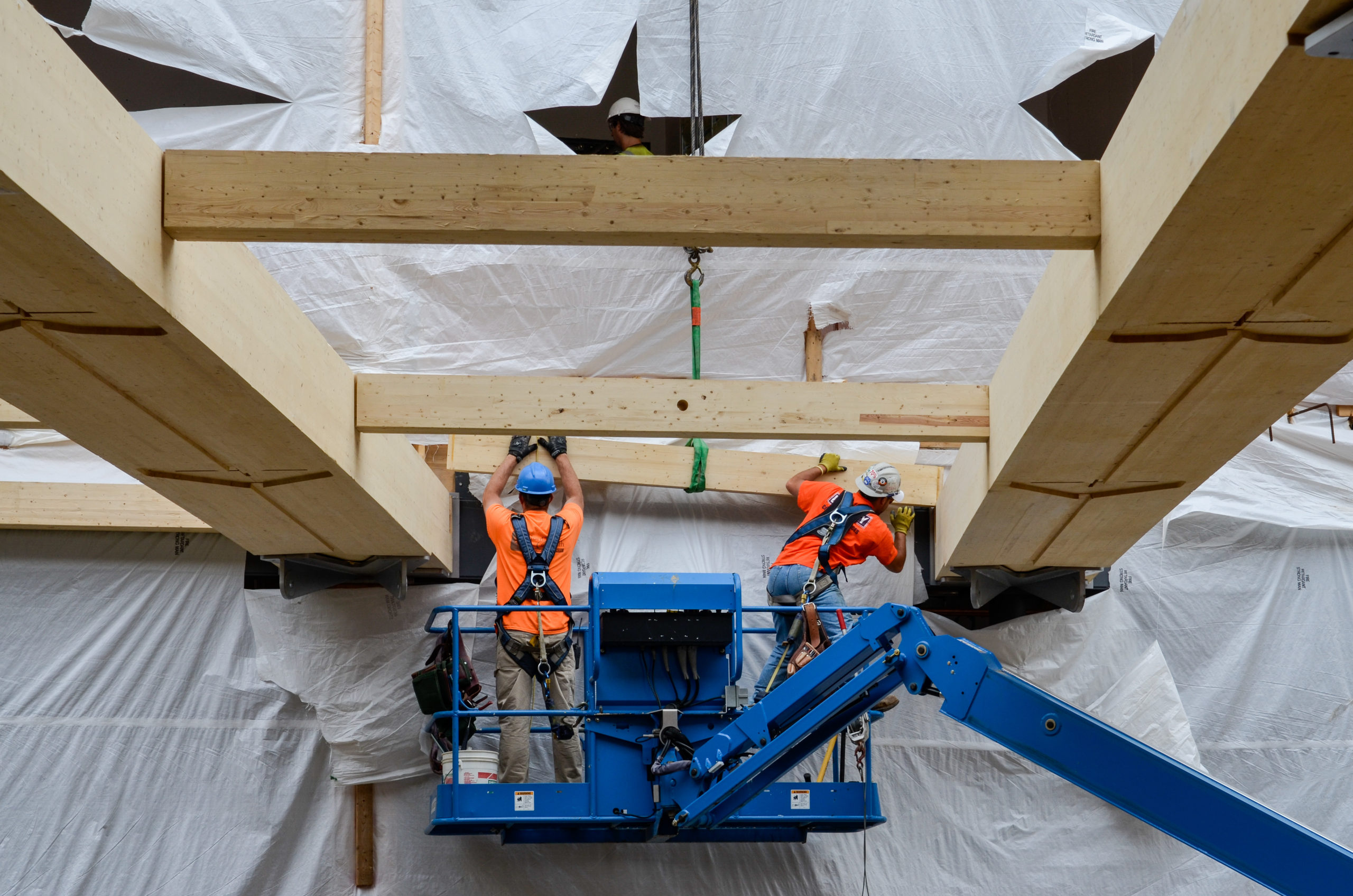
WoodWorks’ efforts to enhance construction-management education and installer training continue to bring new partnerships, including with university construction-management programs. Partnerships are now in place with Michigan State University’s School of Planning, Design and Construction; State University of New York’s School of Environmental Science and Forestry; and Clemson University’s Wood Utilization + Design Institute and its College of Architecture, Arts, and Humanities.
WoodWorks also recently finalized agreements for installer training programs with five new training centers, bringing the total number of such programs to ten:
- Chicago Regional Council of Carpenters Apprentice and Training Program – Elk Grove Village, Illinois
- Northwest Carpenters Institute of Washington – Kent, Washington
- Pacific Northwest Carpenters Institute – Portland, Oregon
- North Atlantic States Apprentice Training Fund – Millbury, Massachusetts, and Rock Tavern, New York
- Southwest Carpenters Training Fund – Buena Park, California
- Philadelphia Joint Apprentice Training Fund – Philadelphia, Pennsylvania
- Joint Apprenticeship and Training Trust Fund – Richfield, Ohio
- New York City District Council of Carpenters Training Center – New York, New York
- New York City Iron Workers – New York, New York
To date, these installer training programs have provided 1,728 hours of training since the beginning of 2021 and WoodWorks is targeting 10,000 hours of training in 2022.
WoodWorks provides curriculum and training support, as well as training mock-ups and components, to these programs, courtesy of funding from the SLB and USDA Forest Service. WoodWorks’ partnerships with training centers and other entities have increased the number of available installer training programs by 450% since the beginning of 2021.
The AWC Represented at the Truman Fire Forum

Ray O’Brocki, the AWC’s Manager of Fire Service Relations, recently participated in the prestigious Truman Fire Forum in San Antonio, Texas. O’Brocki, who was invited thanks to his experience as an assistant fire chief and fire marshal, was the forum’s only participant from a building material interest.
The forum represents a collaboration between the National Fallen Firefighters Foundation and Truman Fire Forum to fulfill President Harry Truman’s commitment to reducing fires and loss from fires in the United States. In 2019, forum participants released a report with five recommendations to advance this vision. This year, 52 nationally known and high-ranking fire service members—including the U.S. fire administrator and fire chiefs representing numerous major metro areas—revisited the next steps laid out in the 2019 report, discussed emerging issues affecting the fire service, and brainstormed ideas to advance a fire-safe America.
The AWC and WoodWorks Launch Redesigned Websites
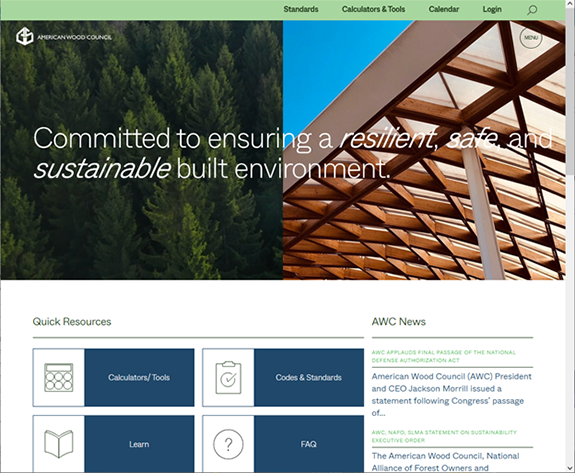
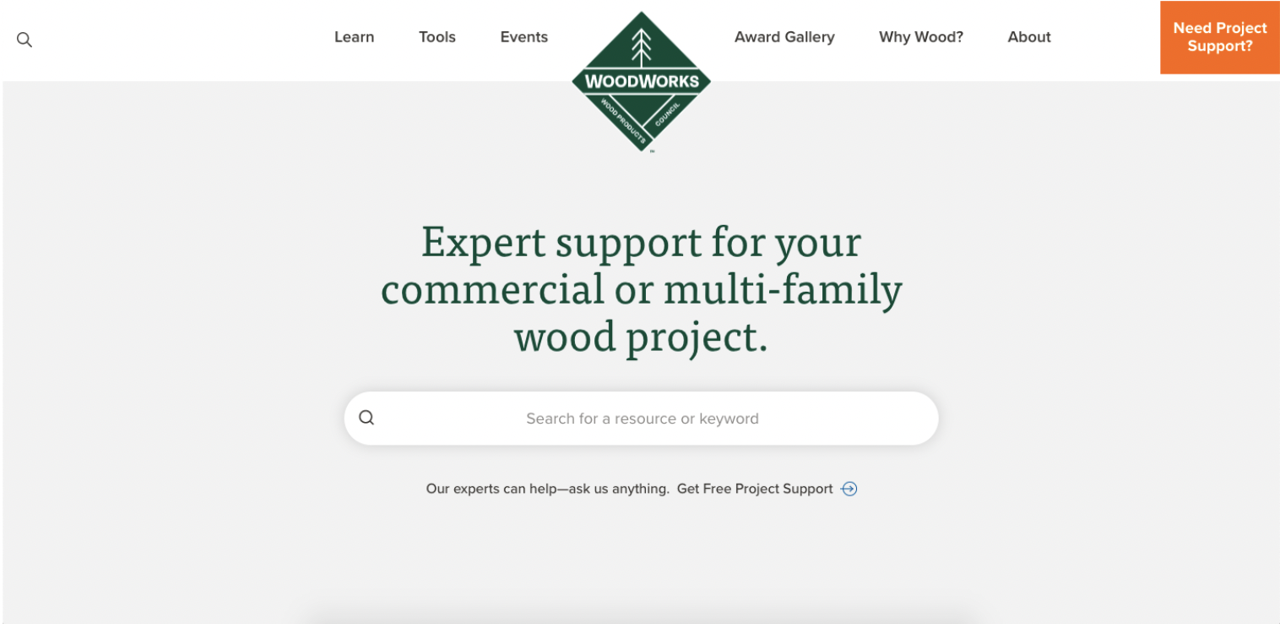
Both the AWC and WoodWorks recently launched redesigned websites to better serve their audiences and connect them with valuable resources to expand the use of wood in U.S. building construction.
The AWC’s redesigned website showcases a new branding vision; highlights the wood products industry’s commitment to safe, resilient buildings through codes; and promotes the AWC’s commitment to sustainability. In addition to popular tools such as the Span Calculator and library of standards, the site offers such new features as a filtered Resouce Hub, Wood Products Directory, and Pictorial Guide of wood-framing systems.
WoodWorks’ new site features improved navigation and search functionality, a new Wood Design Award gallery, and a new CAD/Revit tool that makes it easier to find and download specific mass timber and light-frame details for a range of applications. New features also include a page for each Regional Director, which will be expanded with regional news over time, and a Protective Design page for designers who have to meet blast and forced-entry/ballistic-protection requirements.
Visit awc.org and woodworks.org today to explore the revamped sites.
Industry News
Plant-Covered Mass Timber Building Planned for Toronto Waterfront
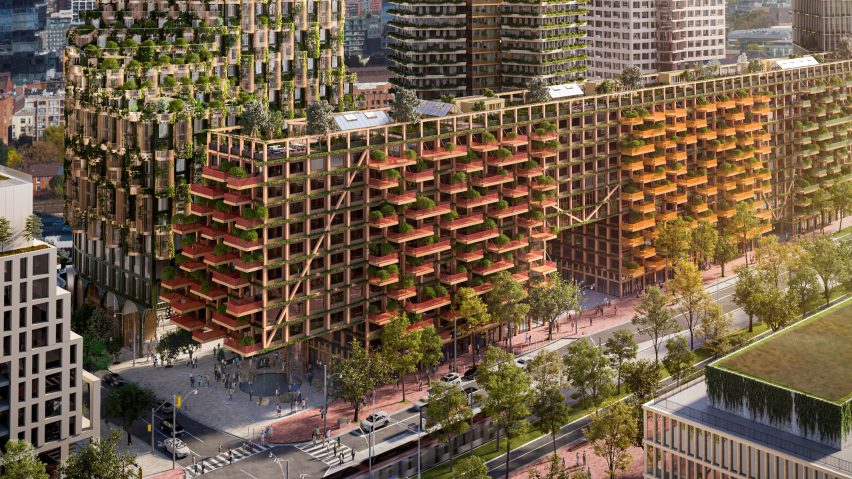
Architecture studio Adjaye Associates has designed a beautiful mass timber building, appropriately called Timber House, as part of a forthcoming development on Toronto’s waterfront. David Adjaye is an award-winning Ghanaian-British architect known to infuse his artistic sensibilities and ethos for community-driven projects. Recognized as one of the 100 most influential people of the year by TIME Magazine in 2017, some of his recognizable work includes the National Museum of African American History and Culture in Washington D.C., the Museum of Contemporary Art in Denver, and the Nobel Peace Centre in Oslo.
Once complete, Timber House is expected to be one of the largest residential mass timber buildings in Canada, providing both affordable and senior citizen housing. The building is one of several new structures proposed as part of an all-electric, net-zero carbon development envisioned by developers Dream Unlimited and Great Gulf. Previously proposed mass timber developments at the same site by Sidewalk Toronto, a project of Google subsidiary Sidewalk Labs, fell through during the pandemic.
Read more about Timber House here.
Residential Rents Rise Due to Market, Inventory Pressures
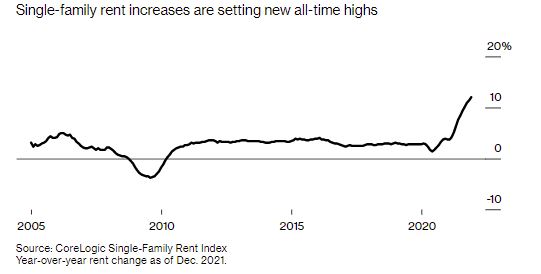
Bloomberg recently covered the meteoric rise of rental prices in the United States, positing that renting a home is nearly as challenging as buying one in a market plagued by low supply and high demand. According to business intelligence firm CoreLogic, rental prices for single-family homes grew at an all-time-high rate of 7.8% in 2021, rising 12% year-over-year in December alone. Miami saw the highest increase, at 35.7%.
Hikes in rent track closely with rises in home values. Redfin Corp. reports that the median home price in the United States rose 14% year-over-year in January 2022; active listings fell 29%, to an all-time low of 438,000; and average mortgage payments reached an all-time high of $1,877 because of higher asking prices and borrowing costs.
Institutional investors are adding further pressure to home prices by snapping up existing single-family homes to convert them to rentals as well as embarking on the rapidly growing build-for-rent segment.
Housing economist Jay Parsons, of real estate technology firm RealPage Inc., sees no end for pressure on the rental market.
Read more about these trends here.
Custom Home Building Saw Double-Digit Growth in 2021
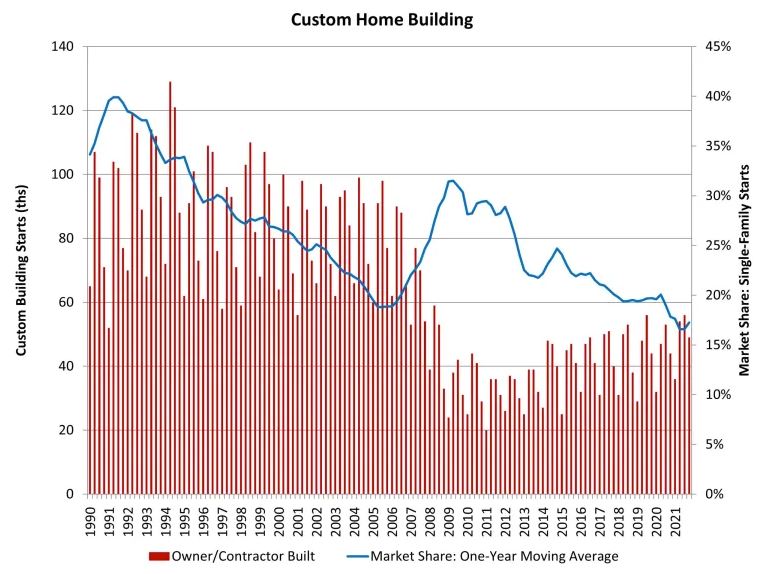
National Association of Home Builders’ (NAHB) analysis of Census Data from the Quarterly Starts and Completions by Purpose and Design survey indicates that custom home building grew by 10.8% in 2021, fueled by strong demand for more square footage and existing homeowners’ ability to leverage home equity to purchase larger and custom homes. Custom homes now account for 17.3% of all single-family home starts, as measured on a one-year moving average. This reverses a period of declining market share. Custom home construction is measured based on home building on private properties and does not consider real estate sales.
Read more about these trends here.
Build-for-Rent Starts Expected to More Than Double in 2022
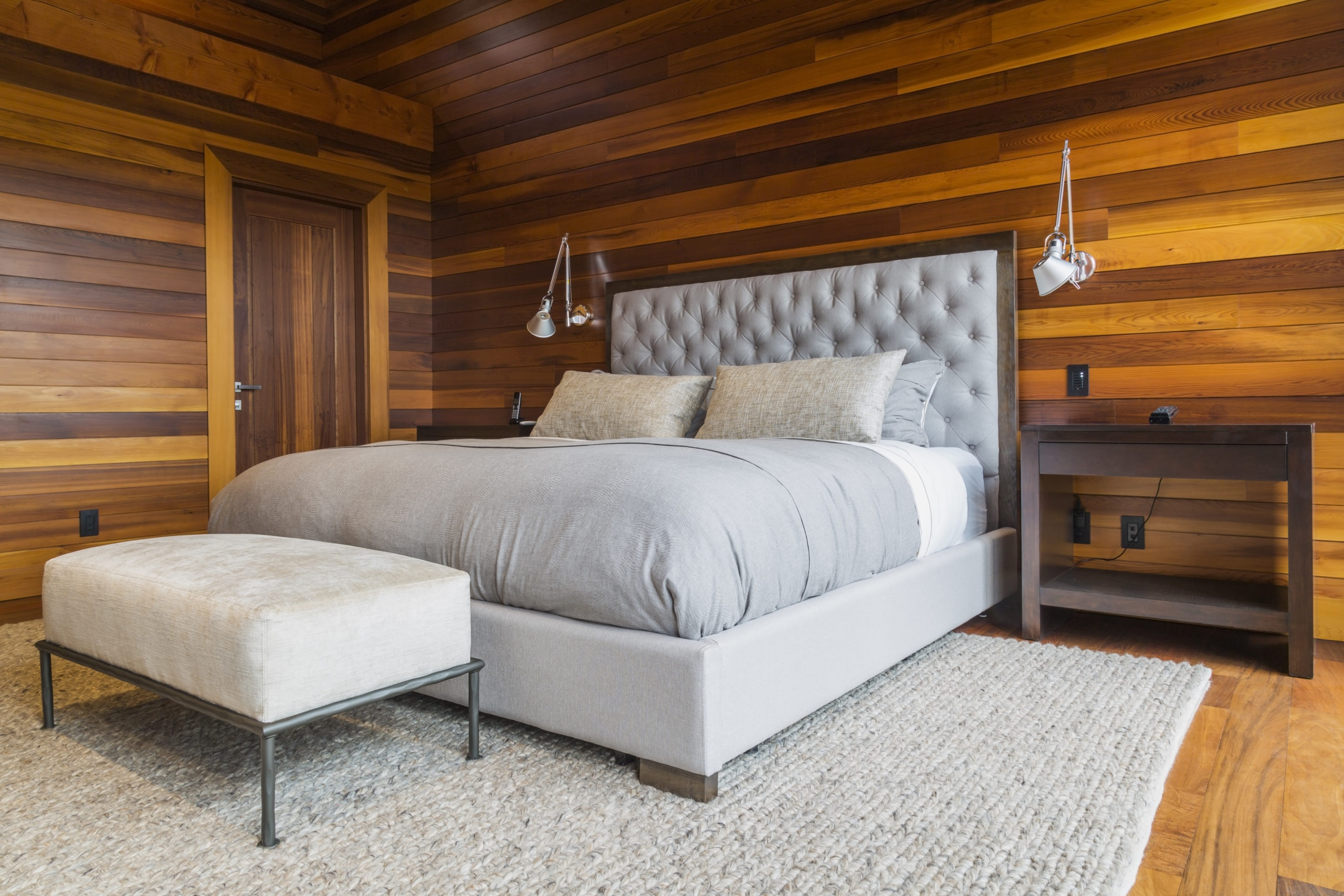
BUILDER recently interviewed executives with real estate investment firm Pretium Partners to learn more about the future of the rapidly growing build-for-rent market segment. More than 6,700 new build-for-rent home units were added in 2021, and an additional 14,000 units are expected by the end of 2022. For its part, Pretium Partners has 3,000 build-for-rent homes underway and recently announced a $600 million joint venture to build an additional 2,000-plus rental homes in Florida, Indiana, and Ohio.
The Pretium team attributes consumers’ desire for more space as key to surging demand, including as people seek to enable better work-from-home environments. Overall affordability and flexibility are also key drivers. Pretium believes that the segment’s growth and the density of its developments also help to chip away at the nation’s overall undersupply of housing, particularly in the Sun Belt, Florida, and the Midwest, where Pretium registers the strongest demand.
Pretium also notes that new build-for-rent homes are likely to be healthy homes, designed to be energy efficient and using sustainable materials, including mass timber. The SLB, led by its Programs Working Group, has prioritized the build-for-rent market as an area of interest based on potential growth opportunity for softwood lumber.
Read more about the build-for-rent housing market here.
NAFO CEO Touts Multiple Benefits of Working Forests on NAHB Podcast

The NAHB’s Housing Developments podcast recently hosted David Tenny, CEO of the National Alliance of Forest Owners (NAFO), who discussed working forests and the many benefits they provide society in terms of lumber for housing and other applications, jobs, and carbon sequestration. Tenny stressed how timber-based housing is a key source of demand that contributes to the viability of domestic, privately owned working forests, and that, in turn, both housing and working forests can make meaningful contributions to mitigating climate change.
Listen to the podcast here.
Los Angeles Considers Zero-Carbon Requirement for New Buildings

A member of the Los Angeles (L.A.) City Council recently introduced a motion to require all new commercial and residential buildings in the city to operate on a zero-carbon basis as early as 2023. The motion would require all new buildings to source their power from L.A.’s energy grid, which will be carbon free by 2035. Buildings in L.A. currently account for 43% of the city’s greenhouse gas emissions, more than any other sector.
The motion cites L.A.’s worsening heatwaves, wildfires, and droughts as issues demanding “bold solutions.” Besides carbon benefits, net-zero buildings also afford better indoor air quality, lower construction costs, and less safety risk, including during earthquakes.
In introducing the motion, Council member Nithya Raman emphasized that the city should be prepared to take measures to ensure the zero-carbon requirement does not slow housing production or spike rents, negatively affecting low-income residents.
“The importance of doing this work in a way that centers equity and environmental justice cannot be overstated—no one must be left behind,” Raman said. “We cannot balance the bill of decarbonizing our buildings on the backs of renters who are already struggling to make ends meet. Our motion requires that the policies we develop here protect renters and do not negatively impact affordable housing construction.”
Six of the council’s 15 members have already endorsed the motion.
Read more here.
New Land Enterprises CEO Envisions Dominant Role for Mass Timber in Multifamily Towers
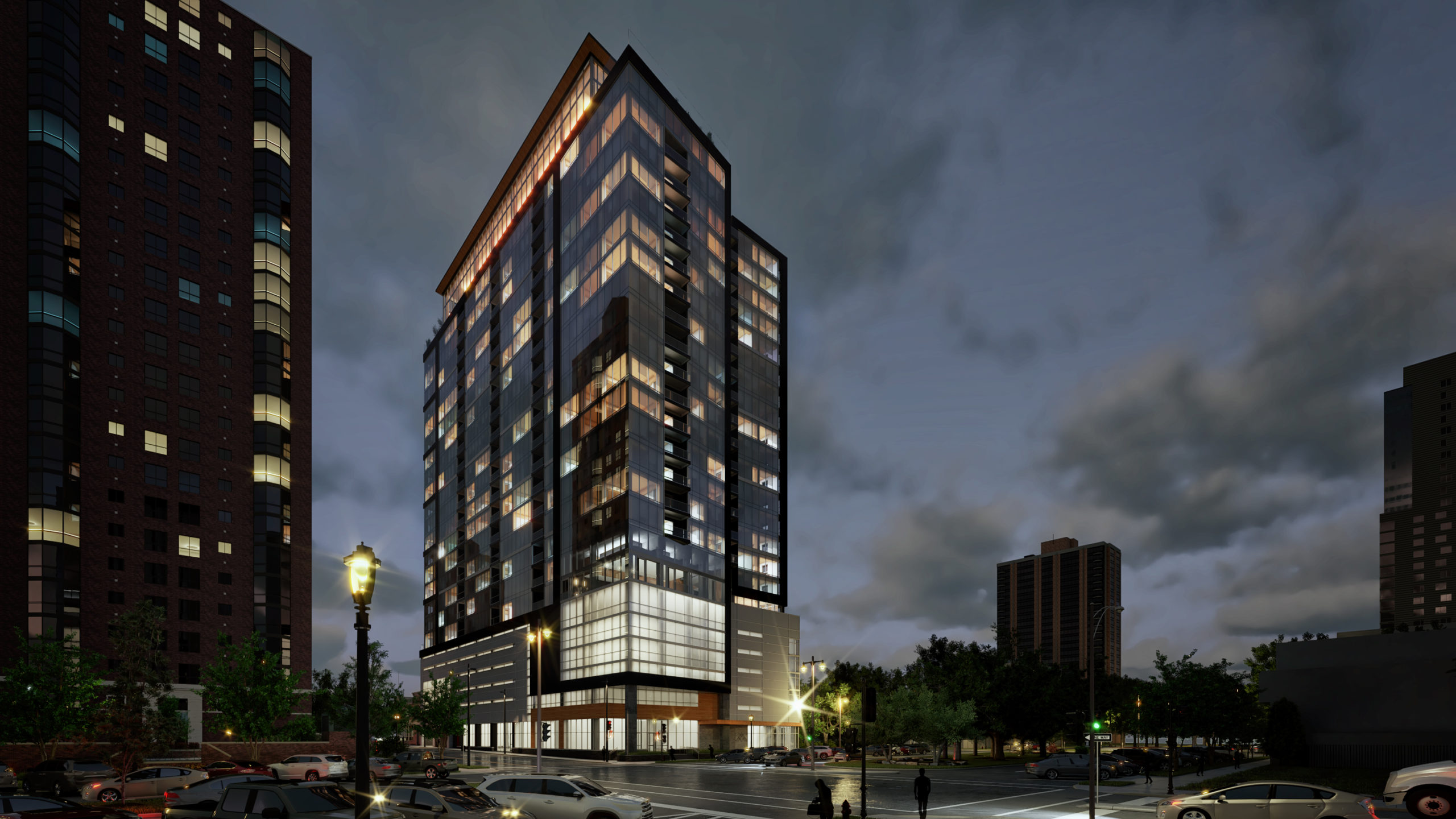
In a recent episode of the BizTimes MKE Podcast, New Land Enterprises CEO Tim Gokhman shared why he thinks mass timber should become the dominant construction technology for eight- to 25-story multifamily buildings.
Gokhman made his remarks during a presentation to the Rotary Club of Milwaukee on Ascent, New Land’s 25-story mass timber apartment project in downtown Milwaukee. Gokhman touted the many environmental, aesthetic, and safety benefits created by the use of mass timber in Ascent, and he noted the importance of building local fire and building officials’ knowledge and familiarity with mass timber products to facilitate code approval.
According to Gokhman, “the real estate industry has to catch up to pretty much every other industry and innovation and lower its carbon footprint.” Mass timber will enable Ascent to do so, and New Land Enterprises is already looking at other markets and opportunities to replicate its low-carbon design.
Read more and access the podcast here.
10 Key Environmental and Sustainability Trends

Writing in TechTarget, journalist Greg Lawton overviewed the rise of “conscious consumerism” and its role in pushing companies to better define, measure, and report environmental, social, and governance (ESG) criteria if they wish to stay competitive in their marketplaces. Lawton notes that sustainability in particular is foremost in investors’ and consumers’ minds, in light of the unmistakable impacts of climate change.
Lawton identified 10 ESG and sustainability trends that company leaders need to understand and position around if they wish to remain competitive. These include measuring sustainability impact, circular economies, supply chain sustainability, and more honest carbon footprint disclosures, all of which are central themes in the softwood lumber industry’s ongoing efforts to report ESG and harness it to competitively position against unsustainable and higher-emissions competitors.
Read more about these ESG trends here.
Home Improvement Market Poised for More Growth in 2022
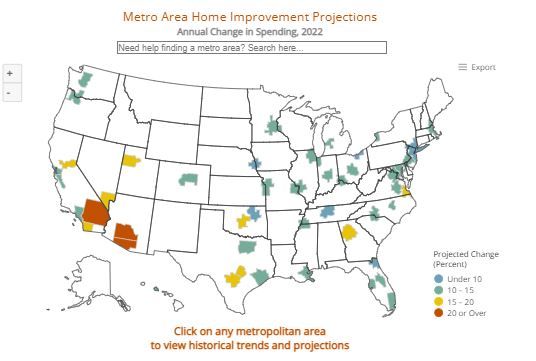
The Joint Center for Housing Studies of Harvard University expects that spending on home improvement and renovation projects will increase at a faster rate in most large metro areas in 2022 than in the prior year. Of the 48 major metro areas tracked, the Joint Center predicts an average spending growth rate of 13.8%, with 20 metro areas growing at a rate of 14% or higher. Only one of the 48 metro areas tracked is expected to experience stagnation compared with 2021 levels.
Rapid appreciation, underscored in part by low housing inventory and high demand, are underlying factors supporting the robust remodeling market. The U.S. South and West are seeing the largest gains in home improvement spending, led by Tucson and Phoenix, Arizona; Riverside, California; Austin and San Antonio, Texas; and Las Vegas, Nevada.
The Joint Center cautions that supply chain challenges and rising labor and building materials costs could work to counter high demand and intent to remodel.
Read more of its analysis here.
Louisiana to Welcome New Wood-Based Plastics Manufacturing Facility
California-based Origin Materials recently announced plans to develop a new manufacturing facility in Louisiana that will convert wood residue into a plant-based polyethylene terephthalate (PET), which is commonly used in plastics found in packaging and textiles. The plant will be operational by 2025.
In using sustainable wood fibers to create PET products, the company will help move the needle toward more net-zero and sustainable production and consumption. According to company co-founder and co-CEO John Bissell, “The demand for ‘net zero’-enabling materials is extremely strong, and we believe this plant will be instrumental in addressing demand for our products in the United States and internationally.”
Read more about Origin’s upcoming Louisiana operation here.
Insights on the Competition
Biden Administration Releases Strategy to Procure Low-Emissions Materials in Federal Projects

The Biden Administration recently released a new strategy that will require federal agencies and projects to use lower-emissions cement, steel, aluminum, and other industrial materials in an effort to reduce carbon emissions. The administration intends, in part, for this new policy to catalyze private industry and the industrial sector’s development of lower-carbon products. Strategy implementation will be supported by a newly formed Buy Clean Task Force, which is charged with promoting the use of construction materials with lower embodied emissions and pollutants across their lifecycle.
While Buy Clean programs can help markets to avoid highly carbon-intensive materials, a more comprehensive approach incorporating whole-building life cycle assessments (WBLCAs) is likely a better way to inform low-carbon material choices as well as demonstrate wood’s comparative value over competing materials. The AWC is currently working with the USDA Forest Service to push for WBLCAs as a key tool to help the building sector—including but not limited to the federal government—to choose sustainable, lower-emissions alternatives like wood.
Read more about the Biden Administration’s new strategy here.
Industry Resources
FEA’s Housing Dashboard
This housing dashboard is provided compliments of the Forest Economic Advisors (FEA).
View the March Dashboard
Virginia Tech's Monthly Housing Report
This monthly housing commentary report is a free service of Virginia Tech and is intended to help one gauge future business activity in the U.S. housing market.
January 2022 Reports (released in March 2022)
Part A: January Housing Commentary
Part B: January Economic Conditions


